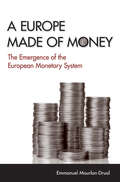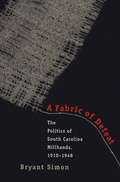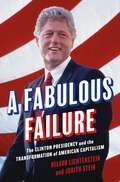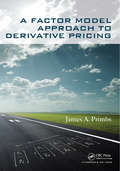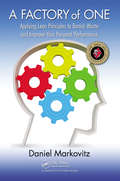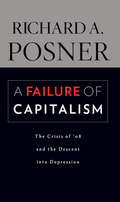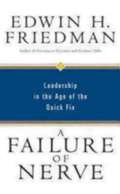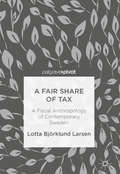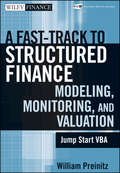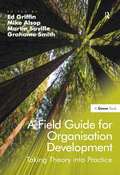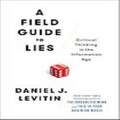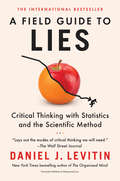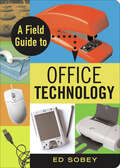- Table View
- List View
A Dynamic Model of the US Energy System: A Tool For Energy R & D Planning (Routledge Library Editions: Energy Economics)
by John P. WeyantOriginally published in 1984, this book develops a quantitative model designed for use in the evaluation of the relative merits of alternative energy R&D programmes. It is used to compare the merits of major energy-technology R&D programmes during the 1970s in the USA: Liquid-metal fast breeder reactors, synthetic fuels derived from coal and oil shale and improved efficiency in end-use technologies. The benefits/disadvantages are analyzed in terms of economics, security and the environment. Although published some years ago, the economic benefit assessed is in terms of the impact that commercialization of a particular energy-technology would have on the total 60 year cost of the US energy supply system. The security benefit is measured in terms of the reduction of crude oil imports and the environmental factors are measured here by the total tonnage of coal and oil shale that is extracted each year. All of these issues continue to be relevant today.
A Empresa Regenerativa
by Patrícia Pinto Ethan Roland Gregory LanduaAs 8 Formas de Capital: Um novo modelo financeiro em prol de uma abundância otimizada Num mundo de sistemas ecológicos e sociais danificados, com uma economia global fragilizada e com as constantes alterações climáticas, o negócio tal como o conhecemos, poderá desenvolver-se, mas também pode correr o risco de não conseguir sobreviver. Nada é mais aceitável do que alcançar os lucros financeiros, extrair proveitos abundantes e proporcionar uma boa prosperidade que é fundamental aos nossos terrenos e fontes de água. As empresas precisam de um novo modelo com o qual possam abordar, de uma forma mais abrangente, o mundo e dar importância à necessidade da introdução de um processo novo no sistema enquanto se elucidam as pessoas nas tomadas de decisão mais relevantes. As 8 Formas de Capital é o modelo a seguir. Ao articularmos estas formas múltiplas de capital nas transações diárias, estamos a abrir portas a uma realidade mais abrangente sobre os lucros e sobre a economia. A Empresa Regenerativa define a diferença existente entre os sistemas degenerativos, os sustentáveis e os regenerativos. Também articula os quatro fatores da empresa regenerativa e os princípios para a concepção de empresa ecológica regenerativa. O Instituto "Regenerative Enterprise Institute", ou o seu representante em Portugal, também oferece serviços de formação e consultoria às empresas e corporações que querem adaptar-se e aderir à resolução dos sistemas regenerativos.
A Europe made of money: the emergence of the European Monetary System
by Emmanuel Mourlon-DruolA Europe Made of Money is a new history of the making of the European Monetary System (EMS), based on extensive archive research. Emmanuel Mourlon-Druol highlights two long-term processes in the monetary and economic negotiations in the decade leading up to the founding of the EMS in 1979. The first is a transnational learning process involving a powerful, networked European monetary elite that shaped a habit of cooperation among technocrats. The second stresses the importance of the European Council, which held regular meetings between heads of government beginning in 1974, giving EEC legitimacy to monetary initiatives that had previously involved semisecret and bilateral negotiations. The interaction of these two features changed the EMS from a fairly trivial piece of administrative business to a tremendously important political agreement.The inception of the EMS was greeted as one of the landmark achievements of regional cooperation, a major leap forward in the creation of a unified Europe. Yet Mourlon-Druol's account stresses that the EMS is much more than a success story of financial cooperation. The technical suggestions made by its architects reveal how state elites conceptualized the larger project of integration. And their monetary policy became a marker for the conception of European identity. The unveiling of the EMS, Mourlon-Druol concludes, represented the convergence of material interests and symbolic, identity-based concerns.
A European Mandate for Financial Sector Supervisors in the EU
by Daniel C. HardyA report from the International Monetary Fund.
A Fabric of Defeat
by Bryant SimonIn this book, Bryant Simon brings to life the politics of white South Carolina millhands during the first half of the twentieth century. His revealing and moving account explores how this group of southern laborers thought about and participated in politics and public power. Taking a broad view of politics, Simon looks at laborers as they engaged in political activity in many venues--at the polling station, on front porches, and on the shop floor--and examines their political involvement at the local, state, and national levels. He describes the campaign styles and rhetoric of such politicians as Coleman Blease and Olin Johnston (himself a former millhand), who eagerly sought the workers' votes. He draws a detailed picture of mill workers casting ballots, carrying placards, marching on the state capital, writing to lawmakers, and picketing factories. These millhands' politics reflected their public and private thoughts about whiteness and blackness,war and the New Deal, democracy and justice, gender and sexuality, class relations and consumption. Ultimately, the people depicted here are neither romanticized nor dismissed as the stereotypically racist and uneducated "rednecks" found in many accounts of southern politics. Southern workers understood the political and social forces that shaped their lives, argues Simon, and they developedcomplex political strategies to deal with those forces.
A Fabulous Failure: The Clinton Presidency and the Transformation of American Capitalism (Politics and Society in Modern America #155)
by Judith Stein Nelson LichtensteinHow the Clinton administration betrayed its progressive principles and capitulated to the rightWhen Bill Clinton was elected president in 1992, he ended twelve years of Republican rule and seemed poised to enact a progressive transformation of the US economy, touching everything from health care to trade to labor relations. Yet by the time he left office, the nation’s economic and social policies had instead lurched dramatically rightward, exacerbating the inequalities so troubling in our own time. This book reveals why Clinton’s expansive agenda was a fabulous failure, and why its demise still haunts us today.Nelson Lichtenstein and Judith Stein show how the administration’s progressive reformers—people like Robert Reich, Ira Magaziner, Laura Tyson, and Joseph Stiglitz—were stymied by a new world of global capitalism that heightened Wall Street influence, undermined domestic manufacturing, and eviscerated the labor movement. Robert Rubin, Larry Summers, and Al Gore proved champions of this financialized world. Meanwhile, Clinton divided his own party when he relied on Republican votes to overhaul welfare, liberalize trade, and deregulate the banking and telecommunications industries. Even the economic boom Clinton ushered in—which tamed unemployment and sent the stock market soaring in what Alan Blinder and Janet Yellen termed a “fabulous decade”—ended with a series of exploding asset bubbles that his neoliberal economic advisors neither foresaw nor prevented.A Fabulous Failure is a study of ideas in action, some powerfully persuasive, others illusionary and self-defeating. It explains why and how the Clinton presidency’s progressive statecraft floundered in a world where the labor movement was weak, civil rights forces quiescent, and corporate America ever more powerful.
A Factor Model Approach to Derivative Pricing
by James A. PrimbsWritten in a highly accessible style, A Factor Model Approach to Derivative Pricing lays a clear and structured foundation for the pricing of derivative securities based upon simple factor model related absence of arbitrage ideas. This unique and unifying approach provides for a broad treatment of topics and models, including equity, interest-rate, and credit derivatives, as well as hedging and tree-based computational methods, but without reliance on the heavy prerequisites that often accompany such topics. Key features A single fundamental absence of arbitrage relationship based on factor models is used to motivate all the results in the book A structured three-step procedure is used to guide the derivation of absence of arbitrage equations and illuminate core underlying concepts Brownian motion and Poisson process driven models are treated together, allowing for a broad and cohesive presentation of topics The final chapter provides a new approach to risk neutral pricing that introduces the topic as a seamless and natural extension of the factor model approach Whether being used as text for an intermediate level course in derivatives, or by researchers and practitioners who are seeking a better understanding of the fundamental ideas that underlie derivative pricing, readers will appreciate the book’s ability to unify many disparate topics and models under a single conceptual theme. James A Primbs is an Associate Professor of Finance at the Mihaylo College of Business and Economics at California State University, Fullerton.
A Factory of One: Applying Lean Principles to Banish Waste and Improve Your Personal Performance
by Daniel MarkovitzMost business readers have heard of the Lean principles developed for factories a set of tools and ideas that have enabled companies to dramatically boost quality by reducing waste and errors producing more while using less. Yet until now, few have recognized how relevant these powerful ideas are to individuals and their daily work. Every person at
A Failure of Capitalism: The Crisis of ’08 and the Descent into Depression
by Richard A. PosnerThe financial and economic crisis that began in 2008 is the most alarming of our lifetime because of the warp-speed at which it is occurring. How could it have happened, especially after all that we’ve learned from the Great Depression? Why wasn’t it anticipated so that remedial steps could be taken to avoid or mitigate it? What can be done to reverse a slide into a full-blown depression? Why have the responses to date of the government and the economics profession been so lackluster? Richard Posner presents a concise and non-technical examination of this mother of all financial disasters and of the, as yet, stumbling efforts to cope with it. No previous acquaintance on the part of the reader with macroeconomics or the theory of finance is presupposed. This is a book for intelligent generalists that will interest specialists as well. Among the facts and causes Posner identifies are: excess savings flowing in from Asia and the reckless lowering of interest rates by the Federal Reserve Board; the relation between executive compensation, short-term profit goals, and risky lending; the housing bubble fueled by low interest rates, aggressive mortgage marketing, and loose regulations; the low savings rate of American people; and the highly leveraged balance sheets of large financial institutions. Posner analyzes the two basic remedial approaches to the crisis, which correspond to the two theories of the cause of the Great Depression: the monetarist—that the Federal Reserve Board allowed the money supply to shrink, thus failing to prevent a disastrous deflation—and the Keynesian—that the depression was the product of a credit binge in the 1920s, a stock-market crash, and the ensuing downward spiral in economic activity. Posner concludes that the pendulum swung too far and that our financial markets need to be more heavily regulated.
A Failure of Nerve: Leadership in the Age of the Quick Fix
by Edwin H. Friedman Margaret M. Treadwell Edward W. BealTen years after his death, Edwin Friedman's insights into leadership are more urgently needed than ever. He was the first to tell us that all organizations have personalities, as families do, and to apply the insights of family therapy to churches and synagogues, rectors and rabbis, politicians and teachers. Failure of Nerve is essential reading for all leaders, be they parents or presidents, corporate executives or educators, religious superiors or coaches, healers or generals, managers or clergy. Friedman's insights about our regressed "seatbelt society," oriented toward safety rather than adventure, help explain the sabotage that leaders constantly face today. Suspicious of the quick fixes and instant solutions that sweep through our culture only to give way to the next fad, he argues for strength and self-differentiation as the marks of true leadership. His formula for success is more maturity, not more data; stamina, not technique; and personal responsibility, not empathy. This book was unfinished at the time of Friedman's death and originally published in a limited edition. This new edition makes his life-changing insights and challenges available to a new generation of readers.
A Fair Share of Tax: A Fiscal Anthropology of Contemporary Sweden
by Lotta Björklund LarsenThis book is open access under a CC BY 4.0 license.This book takes a taxpayer's perspective on the relations taxation creates between people and their state. Björklund Larsen proposes that in order to understand tax compliance and cheating, we have to look beyond law, psychological experiments and surveys to also include tax collectors and taxpayers' practices. The text explores the view of taxes seen as citizen’s explicit economic relation to the state and implicit economic relation to all other compatriots. Björklund Larsen directs our gaze onto the concept of reciprocity, which is often proposed as an explanation in tax compliance research, and explores its diverse meanings and implications ethnographically. The empirical cases are based on ethnography from two opposing tax practices in Sweden. Firstly, from a study of analysts, auditors, legal experts and managers at the Swedish Tax Agency and how they, quite successfully, strive for legitimacy in their tax collecting activities. Secondly, from fieldwork among a group of middle-aged Swedes and how they justify their purchasing work off the books – essentially tax-cheating practices. Sweden is a modern welfare society with citizens holding rational and secular values, yet trusting their government and fellow citizens. Sweden also has a high tax burden that is collected by one of its most revered governmental agencies – the Swedish Tax Agency - making it an interesting case studying tax compliance.
A Farewell to Alms: A Brief Economic History of the World (The Princeton Economic History of the Western World #27)
by Gregory ClarkWhy are some parts of the world so rich and others so poor? Why did the Industrial Revolution--and the unprecedented economic growth that came with it--occur in eighteenth-century England, and not at some other time, or in some other place? Why didn't industrialization make the whole world rich--and why did it make large parts of the world even poorer? In A Farewell to Alms, Gregory Clark tackles these profound questions and suggests a new and provocative way in which culture--not exploitation, geography, or resources--explains the wealth, and the poverty, of nations. Countering the prevailing theory that the Industrial Revolution was sparked by the sudden development of stable political, legal, and economic institutions in seventeenth-century Europe, Clark shows that such institutions existed long before industrialization. He argues instead that these institutions gradually led to deep cultural changes by encouraging people to abandon hunter-gatherer instincts-violence, impatience, and economy of effort-and adopt economic habits-hard work, rationality, and education. The problem, Clark says, is that only societies that have long histories of settlement and security seem to develop the cultural characteristics and effective workforces that enable economic growth. For the many societies that have not enjoyed long periods of stability, industrialization has not been a blessing. Clark also dissects the notion, championed by Jared Diamond in Guns, Germs, and Steel, that natural endowments such as geography account for differences in the wealth of nations. A brilliant and sobering challenge to the idea that poor societies can be economically developed through outside intervention, A Farewell to Alms may change the way global economic history is understood.
A Fashion Retailer’s Guide to Thriving in Turbulent Times
by Ghalia Boustani Daniela LeoniniBy raising questions and providing scenarios for success, this book embraces fashion brand development in current turbulent retail environments. A brand must have an essence; it needs to respect a philosophy, abide by values and follow clear processes. A brand’s success and sustainability follow specific rules, nonetheless for fashion brands. But do fashion brand management rules apply in today’s turbulent times? Acknowledging and going beyond branding theory, this book challenges knowledge and practices that have been guiding fashion retail brands for many years. Co-written by an academic researcher and a retail consultant with 30 years of experience, this practical guide offers not a process that fashion brands must follow, but potential avenues for survival in today’s retail market and facing today’s customers. Professionals and students of fashion retailing and branding will appreciate the detailed case studies that illustrate revisited concepts and thought-provoking suggestions on how to make decisions for an uncertain future.
A Fast Track To Structured Finance Modeling, Monitoring and Valuation
by William PreinitzThis book is designed to start with simple examples that progressively develop the reader's confidence to take on more complex tasks. There is very little theoretical discussion about computer science, operations research algorithms, mathematics, or finance. The thrust of the book is to teach the reader to break complex tasks down into simple tasks. It then looks to implement those simple tasks into VBA code using a critical subset of the features of the language.The tentative contents is: (1) Why? What? Who? Where? and How? (2) Common Sense (3) Securitizing A Loan Portfolio (4) Understanding the Excel Waterfall (5) Designing the VBA Model (6) Laying the Model Groundwork (7) Recorded Macros: A First Look at the VBA Language (8) Writing Menus: An Introduction to Data, Ranges, Arrays, and Objects (9) Controlling the Flow of the Model (10) Building Messaging Capabilities (11) Designing the Model's Reports (12) Main Program and Menus (13) Writing the Collateral Selection Code (14) Calculating the Cash Flows (15) Running the Waterfall: Producing Initial Results (16) Debugging the Model (17) Validating the Model (18) Running the Model (19) Building Additional Capabilities (20) Documentation of the Model (21) Managing the Growth of the Model (22) Building Portfolio Monitoring Model (23) Valuation Techniques: How do we Determine Price? (24) Challenging Times For the Deal (25) Parting Admonitions
A Feasible Basic Income Scheme for Germany: Effects on Labor Supply, Poverty, and Income Inequality (Contributions to Economics)
by Maximilian SommerThis book analyzes the consequences that would arise if Germany's means-tested unemployment benefits were replaced with an unconditional basic income. The basic income scheme introduced is based on a negative income tax and calibrated to be both financially feasible and compatible with current constitutional legislation. Using data from the German Socio-Economic Panel (GSOEP) the author examines the impact of the reform on the household labor supply as well as on both poverty and inequality measures. It is shown that by applying reasonable values for both the basic income and the implied marginal tax rate imposed on earned incomes, efficiency gains can be reconciled with generally accepted value statements. Furthermore, as the proposal includes a universal basic income for families, child poverty could be reduced considerably. The estimates are based on the discrete choice approach to labor supply.
A Female Activist Elite in Italy (1890–1920): Its International Network and Legacy
by Manuela Mosca Elena LaurenziThis book explores and traces the progressive activism and radical ideas of several elite women in Italy beginning in the early 20th century. It discusses the shared political culture that shaped the thinking and the activity of these women, mainly oriented towards political philanthropy and work, seen as the cornerstone of a comprehensive redefinition of gender relations. It also discusses the connections linking them to an international network of women involved in similar political actions and economic initiatives addressing women’s' interests, as well as their legacy for the next generations. With essays from a range of scholars, this book provides an interdisciplinary framework for understanding these activists and deals with methodological and historiographical issues in reconstructing women’s contribution to history.
A Field Guide for Organisation Development: Taking Theory into Practice
by Martin Saville Grahame Smith Ed Griffin Mike AlsopOrganisation Development, as a field, is messy, imperfect and hard to get hold of - it is like nailing jelly to the wall. A Field Guide for Organisation Development offers a variety of perspectives and unparalleled experiences from practitioners and researchers who all share an interest and involvement in Organisation Development (OD). In it are multiple voices, mindsets and practices - not all of which necessarily agree with each other. Leading OD practitioners present a contemporary, practical guide that tackles the dilemmas and polarities that face anyone studying or practising within the OD arena, and encourages them to develop their own particular practice of OD in a way that is appropriate for their context, skills and preferences, while challenging them to look beyond what comes naturally. Here are new ways to support the growth and development of an organisation from modest endeavours that are small in scale to organisation-wide change programmes. A Field Guide for Organisation Development is as comprehensive a resource to support the practice of OD as can be found anywhere. It covers issues of organisational health as well as offering tools aimed at supporting practitioners to survive in the harsh realities of organisational life. It contains chapters on the OD practitioner, on groups, on culture, on data and evaluation. It offers perspectives on change, on the relationship between OD and HR, and on the use of external consultants.
A Field Guide to Community Based Adaptation
by Tim MageeThis book illustrates how including community members in project design and co-management leads to long-lasting, successful achievement of development and adaptation goals.
A Field Guide to Community Based Adaptation
by Tim MageeThe world's poor will be the most critically affected by a changing climate—and yet their current plight isn't improving rapidly enough to fulfill the UN’s Millennium Development Goals. If experienced development organizations are finding it difficult to solve decades-old development problems, how will they additionally solve new challenges driven by climate change? This book illustrates how including community members in project design and co-management leads to long-lasting, successful achievement of development and adaptation goals. This field guide provides a system of building block activities for staff on the ground to use in developing and implementing successful adaptation to climate change projects that can be co-managed and sustained by communities. Based on years of use in 129 different countries, the techniques illustrated in this field guide use a step-by-step progression to lead readers through problem assessment, project design, implementation, and community take over. The book equips development staff with all the tools and techniques they need to improve current project effectiveness, to introduce community based adaptation into organizational programming and to generate new projects. The techniques provided can be applied to broad range of challenges, from agriculture and soil and water challenges, to health concerns, flood defences and market development. The book is supported by a user-friendly website updated by the author, where readers can download online resources for each chapter which they can tailor to their own specific projects. This practical guide is accessible to all levels of development staff and practitioners, as well as to students of development and environmental studies.
A Field Guide to Ghost Guns: For Police and Forensic Investigations
by Robert E. WalkerWhile it has always been legal for a citizen in the United States to manufacture their own firearm, the sale and distribution of such items is illegal under current U.S. law. The primary impediment to individuals making their own weapons has been access to the tooling and machinery required to convert raw materials into finished parts for assembly. However, in the last fifteen years this paradigm has changed drastically. Home builders and companies have emerged to support individuals who choose to produce their own firearm. Kits with receivers and gun components are available for hobbyists, as are 3-D printable gun designs, downloadable from the Internet in some cases. This phenomenon has led to the term ghost guns: firearms whose existence is not reported to any third party and therefore whose existence is unknown and, largely, untraceable. A Field Guide to Ghost Guns: For Police and Forensic Investigators provides a useful brief for field investigators on the technical aspects of the self-made firearm, so-called "ghost guns. The first book to focus on the emergent issue of ghost guns, coverage addresses the history of firearms making and manufacture in the U.S.—including regulated and nonregulated manufacturing, details firearm components and accessories, how to assemble a Firearm, an overview of common Types of ghost guns, and investigative considerations. Though there have been increased calls to regulate guns in the wake of numerous mass shootings, the proliferation of ghost guns—and their increasing use in crimes—would likely require additional laws and regulatory measures. Since there are few knowledgeable firearm practitioners in the field, who can render qualified opinions on the subject, author Robb Walker has taken a practical, pragmatic approach to the topic. The book defines terminology, provides photographs, and explains the concepts surrounding homemade firearm in clear, easy to understand terms. Key Features: Addresses the technology and technical aspects in creating, assembling, and/or modifying homemade firearms—both printable and assembled from pre-fabricated components Discusses the rationale and motivations behind making one’s own firearm Outlines what is currently legal and illegal under U.S. law, providing indicators for investigators for illegally configured firearms A Field Guide to Ghost Guns addresses the pressing need for a practical reference on the topic. The book provides police investigators and forensic ballistics experts a useful aid to understand legal aspects and to identify ghost guns, and the paraphernalia—tooling and machinery, and otherwise—indicative of gun making in a non-formal, factory setting.
A Field Guide to Lies: Critical Thinking in the Information Age
by Daniel J. LevitinFrom The New York Times bestselling author of THE ORGANIZED MIND and THIS IS YOUR BRAIN ON MUSIC, a primer to the critical thinking that is more necessary now than ever. We are bombarded with more information each day than our brains can process--especially in election season. It's raining bad data, half-truths, and even outright lies. New York Times bestselling author Daniel J. Levitin shows how to recognize misleading announcements, statistics, graphs, and written reports revealing the ways lying weasels can use them. It's becoming harder to separate the wheat from the digital chaff. How do we distinguish misinformation, pseudo-facts, distortions, and outright lies from reliable information? Levitin groups his field guide into two categories--statistical infomation and faulty arguments--ultimately showing how science is the bedrock of critical thinking. Infoliteracy means understanding that there are hierarchies of source quality and bias that variously distort our information feeds via every media channel, including social media. We may expect newspapers, bloggers, the government, and Wikipedia to be factually and logically correct, but they so often aren't. We need to think critically about the words and numbers we encounter if we want to be successful at work, at play, and in making the most of our lives. This means checking the plausibility and reasoning--not passively accepting information, repeating it, and making decisions based on it. Readers learn to avoid the extremes of passive gullibility and cynical rejection. Levitin's charming, entertaining, accessible guide can help anyone wake up to a whole lot of things that aren't so. And catch some lying weasels in their tracks!
A Field Guide to Lies: Critical Thinking with Statistics and the Scientific Method
by Daniel J. LevitinWinner of the National Business Book AwardFrom the New York Times bestselling author of The Organized Mind and This Is Your Brain on Music, a primer to the critical thinking that is more necessary now than ever We are bombarded with more information each day than our brains can process—especially in election season. It's raining bad data, half-truths, and even outright lies. New York Times bestselling author Daniel J. Levitin shows how to recognize misleading announcements, statistics, graphs, and written reports, revealing the ways lying weasels can use them. It's becoming harder to separate the wheat from the digital chaff. How do we distinguish misinformation, pseudo-facts, and distortions from reliable information? Levitin groups his field guide into two categories—statistical information and faulty arguments—ultimately showing how science is the bedrock of critical thinking. Infoliteracy means understanding that there are hierarchies of source quality and bias that variously distort our information feeds via every media channel, including social media. We may expect newspapers, bloggers, the government, and Wikipedia to be factually and logically correct, but they so often aren't. We need to think critically about the words and numbers we encounter if we want to be successful at work, at play, and in making the most of our lives. This means checking the plausibility and reasoning—not passively accepting information, repeating it, and making decisions based on it. Readers learn to avoid the extremes of passive gullibility and cynical rejection. Levitin's charming, entertaining, accessible guide can help anyone wake up to a whole lot of things that aren't so. And catch some weasels in their tracks!
A Field Guide to Office Technology
by Ed SobeyWith more than 160 entries detailing everything from the junk buried in desk drawers to that mysterious box blinking away in the coat closet, this practical guide navigates through modern office technology. Each entry includes a functional description of a device (what it is and how it works) as well as particulars on who invented it and how its design has evolved over the years. Devices are grouped according to their habitats--in the conference room, hanging from the ceiling, or connected to a computer--to assist in quick and easy identification. Solving office mysteries, such as why telephone keypads have their ones in the upper left corner while calculator keypads place the ones in the lower left corner, this fascinating resource decodes the often confusing technological landscapes of everyday offices.
A Field Guide to the English Clergy: A Compendium of Diverse Eccentrics, Pirates, Prelates and Adventurers; All Anglican, Some Even Practising
by The Revd Butler-GallieA Book of the Year for The Times, Mail on Sunday and BBC History Magazine Judge not, lest ye be judged. This timeless wisdom has guided the Anglican Church for hundreds of years, fostering a certain tolerance of eccentricity among its members. Good thing, too. The &‘Mermaid of Morwenstow&’ excommunicated a cat for mousing on a Sunday. When he was late for a service, Bishop Lancelot Fleming commandeered a Navy helicopter. &‘Mad Jack&’ swapped his surplice for a leopard skin and insisted on being carried around in a coffin. And then there was the man who, like Noah&’s evil twin, tried to eat one of each of God&’s creatures… In spite of all this they saw the church as their true calling. After all, who cares if you're wearing red high heels when there are souls to be saved?
A Field in Flux: Sixty Years of Industrial Relations
by Robert B. McKersieA Field in Flux chronicles the extraordinary journey of industrial and labor relations expert Robert McKersie. One of the most important industrial relations scholars and leaders of our time, McKersie pioneered the study of labor negotiations, helping to formulate the concepts of distributive and integrative bargaining that have served as analytical tools for understanding the bargaining process more generally.The book provides a window into McKersie's life and work and its impact on the evolution of labor and industrial relations. Spanning six decades, the reader learns about the intersection of labor and the Civil Rights movement, the watershed moment of the Air Traffic Controller's Strike, his relationship with George Schultz, the shift from labor relations to human resource management, and McKersie's role in the seminal cases (Motorola, GM, Toyota) of the labor movement. A Field in Flux serves two important functions: it demonstrates how people have influenced past employment policies and practices when called to action in critical situations, and it seeks to instill confidence in those who will be called on to address the big challenges facing the future of work today and in the years to come. During a time when the basic values of industrial relations are being challenged and violated, McKersie argues that the profession must adapt to the changing world of work and not forget about the value placed on efficiency, equity, and inclusive employment policies and practices.


